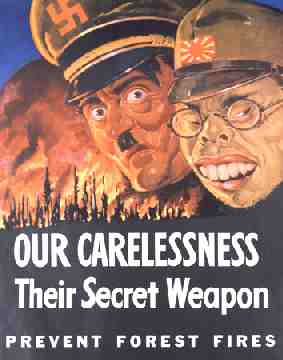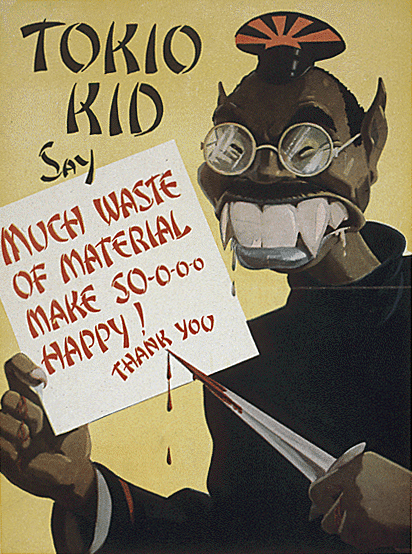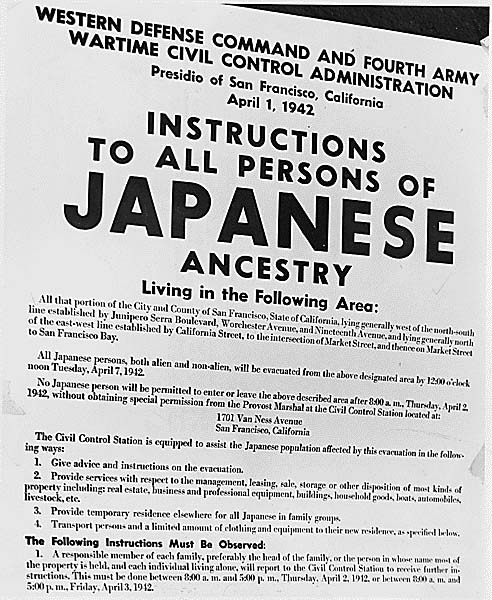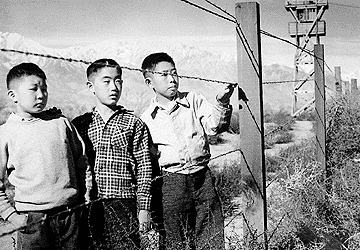
Okay so another post on a comic cover but what a cover to do a post on. This cover to Action Comics #58 is by today's standards unbridled racism. The date this issue was published was March of 1943.
First let’s talk about the cover, I love the use of color in this cover, the printer in black and white gives a stark contrast to Superman and the posters he is churning out and of course the topic of this post is about the posters.
As you all know the United States was in the middle of World War II by 1943, over a year had gone by since the Japanese had bombed Pearl Harbor. The depiction of the Japanese solider is pretty much standard fare at this time, I mean check out some of the posters the United States government put out during the war.
 There is a term used by historians call the zeitgeist, The concept of Zeitgeist goes back to Johann Gottfried Herder and other German Romantics such as Cornelius Jagdmann, but is best known in relation to Hegel's philosophy of history. In 1769 Herder wrote a critique of the work Genius seculi by the philologist Christian Adolph Klotz and introduced the word Zeitgeist into German as a translation of genius seculi (Latin: genius - "guardian spirit" and saeculi - "of the century").
There is a term used by historians call the zeitgeist, The concept of Zeitgeist goes back to Johann Gottfried Herder and other German Romantics such as Cornelius Jagdmann, but is best known in relation to Hegel's philosophy of history. In 1769 Herder wrote a critique of the work Genius seculi by the philologist Christian Adolph Klotz and introduced the word Zeitgeist into German as a translation of genius seculi (Latin: genius - "guardian spirit" and saeculi - "of the century").
The word is defined as the spirit of the time; the taste and outlook characteristic of a period or generation.
Putting zeigeist to work means that you and I living in the 21st century should not make value judgments on people in the past. An example of this is you and I saying that the cover to Action Comics #58 is racist, but if we remember the zeitgeist or spirit of that time it was not seen as racist, it was seen as patriotic, a perfectly acceptable advertisement to raise awareness for war bonds to help fight against the enemy.
There are lots of examples of when we should use the theory of zeigeist. Slavery is one where you could apply it to, say, when thinking about our founding fathers being slave owners. Is slavery wrong? Absolutely it is but to say our founding fathers were horrible men for being slave owners then that flys in the face of the thoughts, beliefs and spirit of that time.
So that is one topic for this post, on to the next one, war bonds, this will be quick.
According to this site: http://www.u-s-history.com/pages/h1682.html
“The last time the United States issued war bonds was during World War II, when full employment collided with rationing, and war bonds were seen as a way to remove money from circulation as well as reduce inflation.
 Issued by the U.S. Government, they were first called Defense Bonds. The name was changed to War Bonds after the Japanese attack on Pearl Harbor, December 7, 1941.
Issued by the U.S. Government, they were first called Defense Bonds. The name was changed to War Bonds after the Japanese attack on Pearl Harbor, December 7, 1941.
An emotional appeal went out to citizens by means of advertising. Even though the bonds offered a rate of return below the market value, it represented a moral and financial stake in the war effort. The advertisements started with radio and newspapers, then later added magazines to reach the masses. The bond campaign was unique in that both the government, as well as private companies, created the advertisements
At the end of World War II, January 3, 1946, the last proceeds from the Victory War Bond campaign were deposited into the U.S. Treasury. More than 85 million Americans — half the population — purchased bonds totaling $185.7 billion. Those incredible results, due to the mass selling efforts of helping to finance the war, have never since been matched.”
So there you go – Superman did his part in selling War Bonds.
Onto the Japanese and what they went through during World War II,
Per this site: http://www.infoplease.com/spot/internment1.html
“On February 19, 1942, soon after the beginning of World War II, Franklin D. Roosevelt signed Executive Order 9066. The evacuation order commenced the round-up of 120,000 Americans of Japanese heritage to one of 10 internment camps—officially called "relocation centers"—in California, Idaho, Utah, Arizona, Wyoming, Colorado, and Arkansas.”
Roosevelt's executive order was fueled by anti-Japanese sentiment among farmers who competed against Japanese labor, politicians who sided with anti-Japanese constituencies, and the general public, whose frenzy was heightened by the Japanese attack of Pearl Harbor. More than 2/3 of the Japanese who were interned in the spring of 1942 were citizens of the United States.
 The U.S. internment camps were overcrowded and provided poor living conditions. According to a 1943 report published by the War Relocation Authority (the administering agency), Japanese Americans were housed in "tarpaper-covered barracks of simple frame construction without plumbing or cooking facilities of any kind." Coal was hard to come by, and internees slept under as many blankets as they were alloted. Food was rationed out at an expense of 48 cents per internee, and served by fellow internees in a mess hall of 250-300 people.
The U.S. internment camps were overcrowded and provided poor living conditions. According to a 1943 report published by the War Relocation Authority (the administering agency), Japanese Americans were housed in "tarpaper-covered barracks of simple frame construction without plumbing or cooking facilities of any kind." Coal was hard to come by, and internees slept under as many blankets as they were alloted. Food was rationed out at an expense of 48 cents per internee, and served by fellow internees in a mess hall of 250-300 people.
Eventually the government allowed internees to leave the concentration camps if they enlisted in the U.S. Army. This offer was not well received. Only 1,200 internees chose to do so
In 1944, two and a half years after signing Executive Order 9066, fourth-term President Franklin D. Roosevelt rescinded the order. The last internment camp was closed by the end of 1945.”
Now I could comment on the camps and the right and the wrong of it but that would violate the zeitgeist of the time.
No comments:
Post a Comment